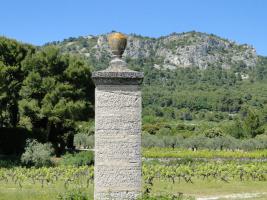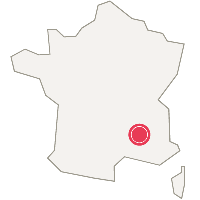You have no items in your shopping cart.
Vallée du Rhône
Château Juvenal
(6 customer reviews)
The estate
Château Juvenal: an exceptional terroir?
In 2001, Anne-Marie and Bernard Forestier bought the château and its estate, which had been run for many years by the Alban family (Jean-Claude, Mireille and Sébastien). Until 2011, vinification was carried out at the Balma Venitia winer... Find out more
 Recommended by
Recommended byLe Guide Hachette - Parker Wine Advocate - Wine Spectator
-

Estimated delivery between 19 and Feb 21,
-

Garantie anti-casse :
Prise en charge totale
The winemaker
The estate
Château Juvenal: an exceptional terroir?
In 2001, Anne-Marie and Bernard Forestier bought the château and its estate, which had been run for many years by the Alban family (Jean-Claude, Mireille and Sébastien). Until 2011, vinification was carried out at the Balma Venitia winery, which marketed a single red cuvée, Château Juvenal, which won several awards in the Hachette guide.
This organization will continue until 2011. That year, Anne-Marie, Bernard Forestier and Sébastien Alban joined forces, pooling their land and building the Château Juvenal winery. Sébastien vinifies at the château for the first time in September 2011, under the guidance of Philippe Cambie, voted 2010 Oenologist of the Year by Robert Parker.
The domaine's terroir is excellent: situated on the southern foothills of Graveyron, a small Provençal hill in the Comtat Venaissin region, its sloping soil is a clay-limestone gravel pit benefiting from maximum sunshine.
Planting, pruning, maintenance and harvesting are carried out by Sébastien and his team with the greatest respect for nature: we have been resolutely practicing organic farming, with total grass cover, since 2009.
Plantations are prepared 2 to 5 years in advance, with soil analyses, ploughing, advice, choice of plans, clones...; they are designed to last 50 years or more.
And because each plot is a country, we choose the optimum harvest date for each one, because the fruit's flavor is at its best when the berries are fully ripe.
Harvesting is done by hand, by qualified grape-pickers, who keep only the ripest, healthiest bunches (sorted by plot).
Ranges :
Our ranges are the result of plot selection:
Les Ribes du vallat, so named because the plots are distributed over the hillsides (the "ribes" in Provençal) that border the ditch (the "vallat" in Provençal) that runs through the estate, establishing a link between the lands of the two families. In spring, painters love to settle here, as the surrounding vistas and colors are deep and ever-changing.
The ribes du vallat include a white, a rosé and a red.
La Terre du petit homme is so named because, in ancient times, its plots were often visited by a little man, always accompanied by his little black dog. It's rumored that he didn't wander there by chance, and that if his dog seemed a little crazy, he also (and above all!) knew how to find truffles like no other rabassier's dog in Comtat Venaissin...
The little man's land has only one wine: a red one
Muscat de Beaumes de Venise this naturally sweet wine is made from white "muscat petit grain" grapes, highly concentrated in floral and fruity aromas, planted on a sandy terroir on safre, in the commune of Beaumes de Venise, in the Vigneaux district.
Vinification :
For whites and rosés, the harvest is cooled (10°) before being pressed directly in the pneumatic press, then transferred to vats and demi-muids. Temperature is maintained throughout alcoholic fermentation. The wine is then aged on lees in temperature-controlled vats and demi-muid for the white, and in temperature-controlled vats for the rosé and muscat.
For reds, the harvest is also cooled (14°), then sent directly to a temperature-controlled vat with the skins and grapes (loaded with anthocyanins and antioxidants). During alcoholic fermentation, we use délestage, pigeage and remontage to extract color and aroma. When all the sugars have been transformed into alcohol, we proceed with devatting, an operation that separates the must from the wine, which continues to mature in temperature-controlled vats or barrels.

Registered since 08/07/2015

1080 ROUTE DE CAROMB ,
84330 Saint-Hippolyte-le-Graveyron
84330 Saint-Hippolyte-le-Graveyron

4 wines available
between 9.8 € and 25.5 €
between 9.8 € and 25.5 €

29 wine's scans
on Twil application
on Twil application

Best rated wines on Twil :
You might like Voir tous les vins de la région






















 TWIL - Achat de Vin
TWIL - Achat de Vin


